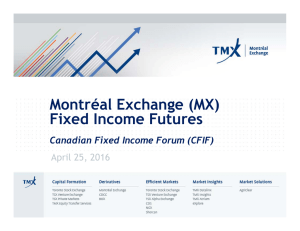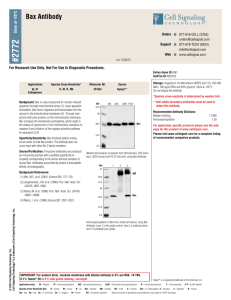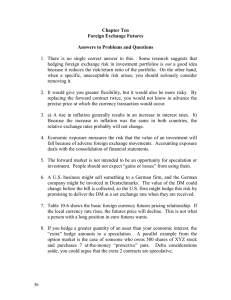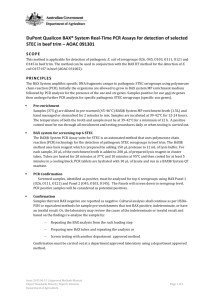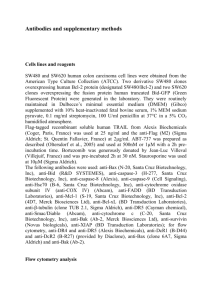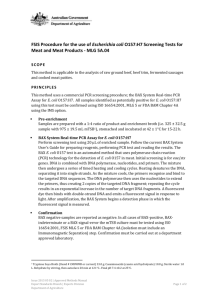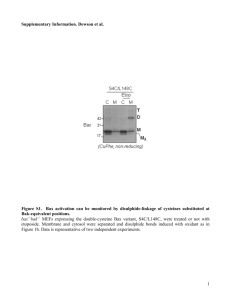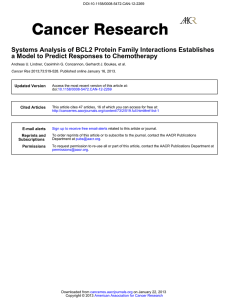Hedge a Future Commercial Paper Issuance against a Possible
advertisement
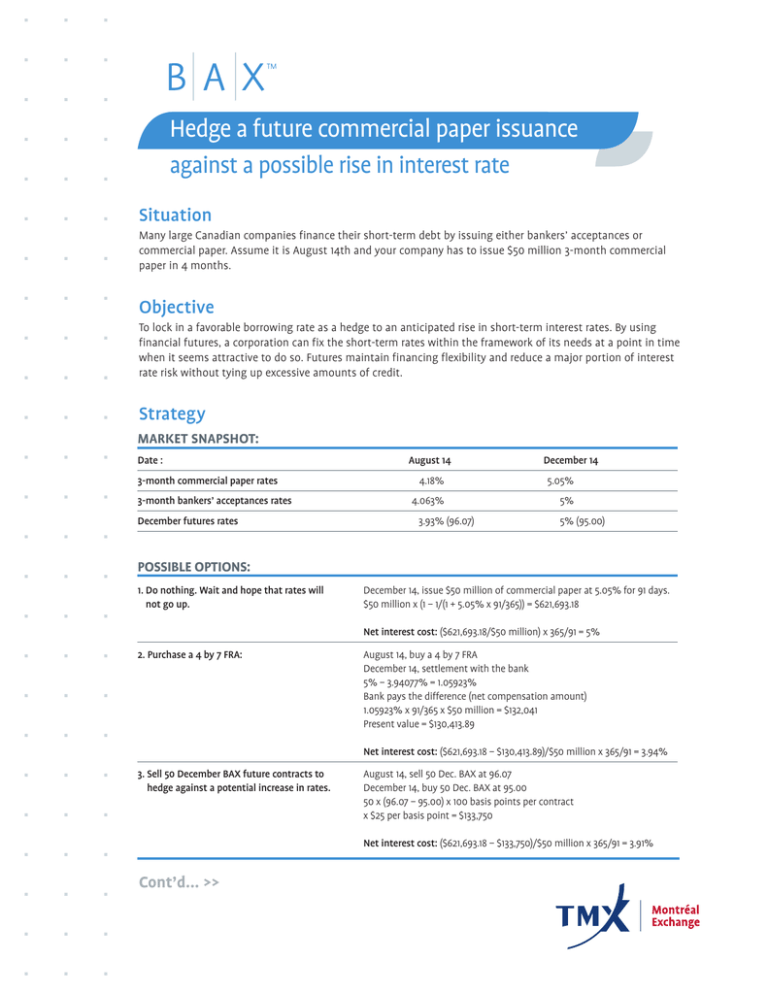
Hedge a future commercial paper issuance against a possible rise in interest rate Situation Many large Canadian companies finance their short-term debt by issuing either bankers’ acceptances or commercial paper. Assume it is August 14th and your company has to issue $50 million 3-month commercial paper in 4 months. Objective To lock in a favorable borrowing rate as a hedge to an anticipated rise in short-term interest rates. By using financial futures, a corporation can fix the short-term rates within the framework of its needs at a point in time when it seems attractive to do so. Futures maintain financing flexibility and reduce a major portion of interest rate risk without tying up excessive amounts of credit. Strategy MARKET SNAPSHOT: Date : 3-month commercial paper rates 3-month bankers’ acceptances rates December futures rates August 14 December 14 4.18% 5.05% 4.063% 5% 3.93% (96.07) 5% (95.00) POSSIBLE OPTIONS: 1. Do nothing. Wait and hope that rates will not go up. December 14, issue $50 million of commercial paper at 5.05% for 91 days. $50 million x (1 – 1/(1 + 5.05% x 91/365)) = $621,693.18 Net interest cost: ($621,693.18/$50 million) x 365/91 = 5% 2. Purchase a 4 by 7 FRA: August 14, buy a 4 by 7 FRA December 14, settlement with the bank 5% – 3.94077% = 1.05923% Bank pays the difference (net compensation amount) 1.05923% x 91/365 x $50 million = $132,041 Present value = $130,413.89 Net interest cost: ($621,693.18 – $130,413.89)/$50 million x 365/91 = 3.94% 3. Sell 50 December BAX future contracts to hedge against a potential increase in rates. August 14, sell 50 Dec. BAX at 96.07 December 14, buy 50 Dec. BAX at 95.00 50 x (96.07 – 95.00) x 100 basis points per contract x $25 per basis point = $133,750 Net interest cost: ($621,693.18 – $133,750)/$50 million x 365/91 = 3.91% Cont’d... >> Results This example shows the economical advantage in entering in a pro-active risk management hedging strategy using BAX contracts. On top of being less expensive to trade than it’s OTC competition (FRA), BAX contracts are more transparent, flexible and are not tying up any credit lines. In this instance, you could lock a future borrowing rate more efficiently and at lower cost using BAX contracts than using a FRA. The opportunity loss in the commercial paper issuance would have been offsetted by the BAX gains. Note This strategy can be applied in the reverse situation where the company invests excess cash resources in shortterm vehicles (bankers’ acceptances,…) on a regular basis and wants to proactively hedge to the reinvestment risk.
